The Orchid Dottyback (Pseudochromis fridmani) is a superb fish, is there any better color than that intense purple? It makes for a great aquarium fish and being raised in captivity, for me, makes it an even better choice. I’ve had quite a history of photographing them, mainly due to their preferred habitat. Here’s why.
When I started out in underwater photography, I would see these wonderful, intensely blue little fish, that would generally dart out of my way. I’d review the images and wonder why I was seeing a purple fish instead. Not that I was getting close; Orchid Dottybacks are very hard to approach. By the time I had some decent strobes, I could bring out the dottyback’s true color.
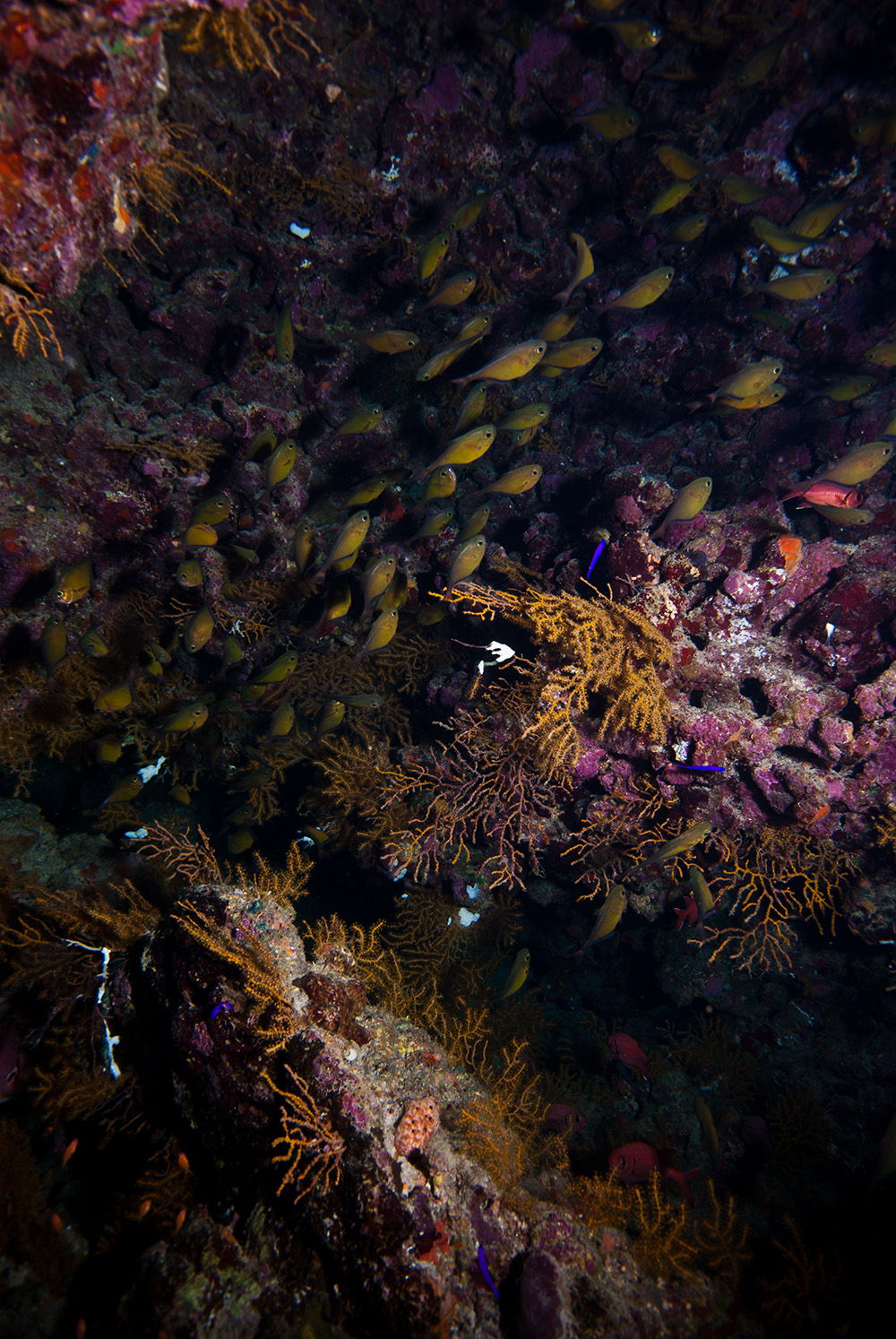
In this image I simply pointed my camera and fired, I couldn’t see anything to shoot, but hoped I’d find something interesting. It took a while for me to realize there were several dottybacks.
It doesn’t help that they tend to be found in and around caves, overhangs, and cracks in the reef. The image above of a Red Sea cave is typical habitat for them. You can see that my strobes aren’t quite set right to bring out the true color of the fish, so they look a little bluer than they are in reality.
In aquaria, orchid Dottybacks tend to be a little secretive and I hope these shots explain it a little.
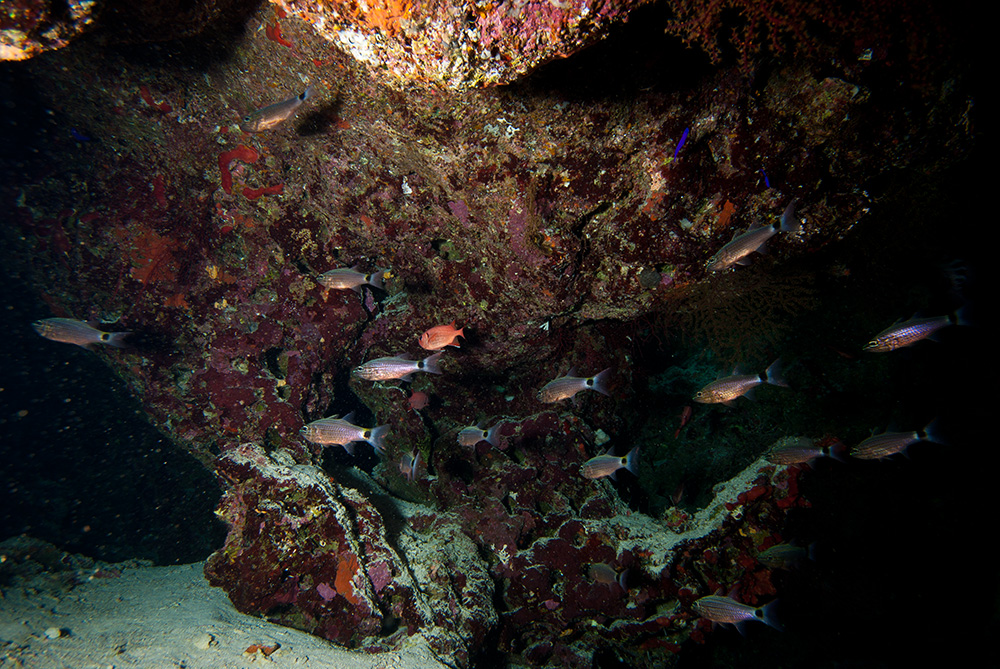
Another cave habitat, a pair of ODs to the top right. Note also the cardinals which I think are Cheilodipterus lachneri
Orchid Dottybacks, are of course endemic to the Red Sea and are happily very common, but only in sheltered habitats. On some sites they can be seen by the dozen, but generally they are to be found alone, or in pairs, at the center of a territory of a few square meters. They appear to get on fine, as long as they keep to their own patch. Again, take note of this and don’t add several to a tank. In fact, just get one and don’t try anything riskier, it’s not worth it.
My final image is, to me at least, quite a special one, with cardinals and sweepers. To the lower left you can see a shoal of young Pseudanthias squamipinnis. There are ODs here, but they’re not easy to find.

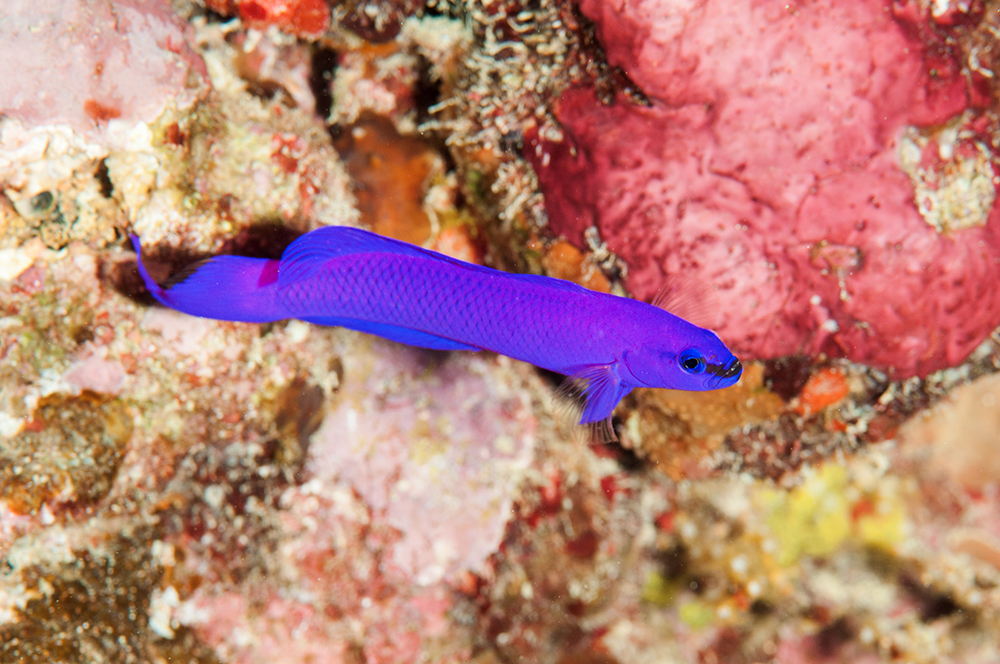
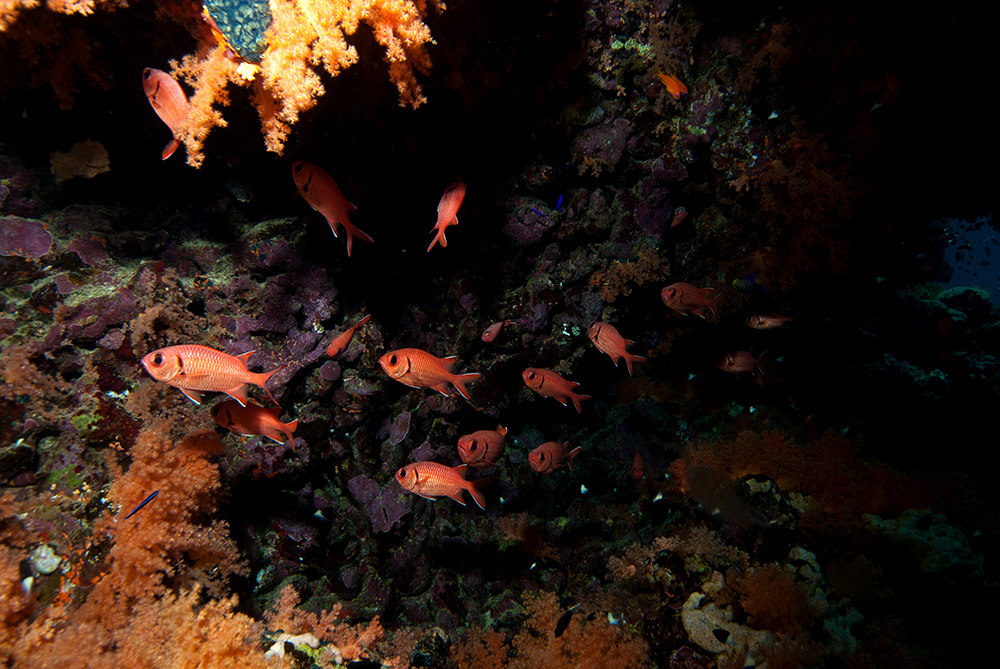
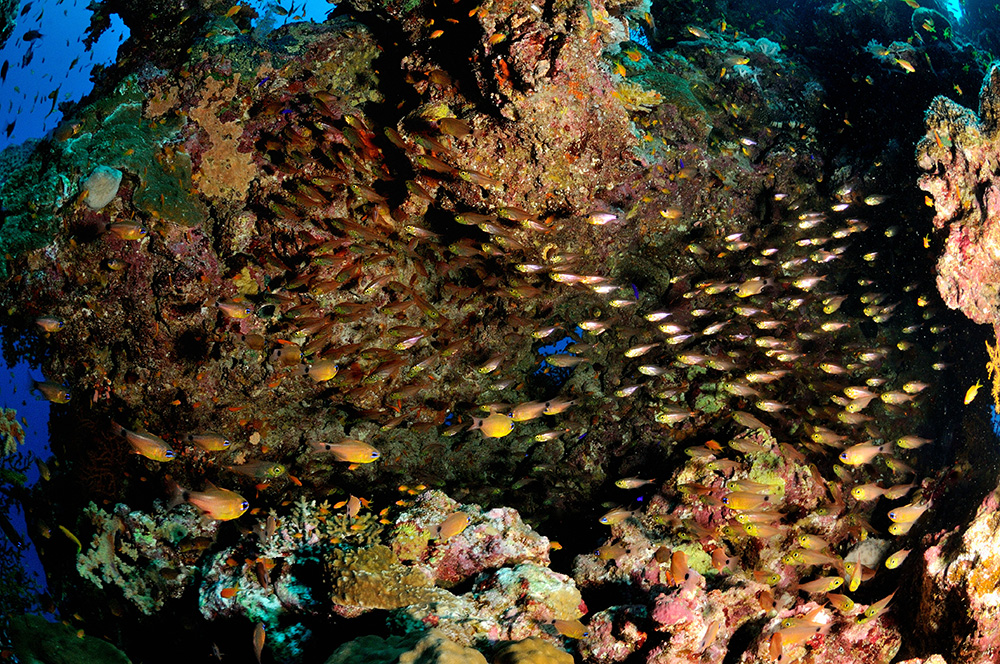








0 Comments